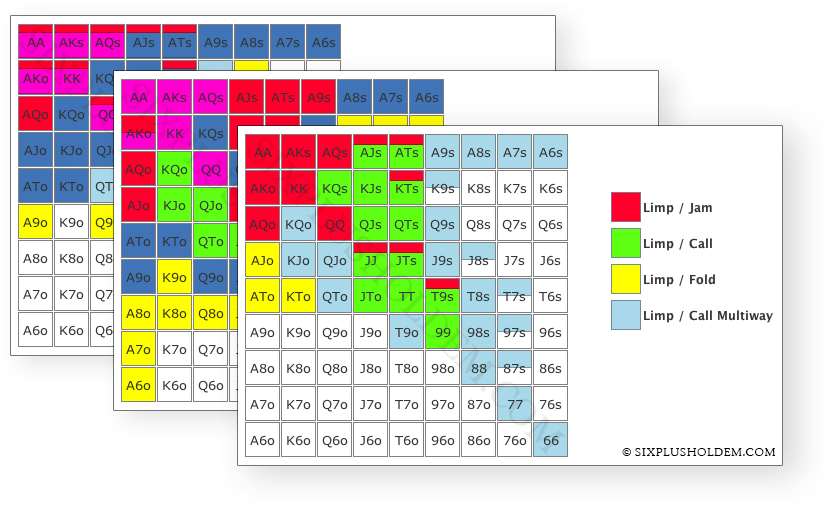Short Deck Poker Odds

- See Full List On Op-poker.com
- Short Deck Poker Odds
- Short Deck Poker Odds Calculator - Six Plus Hold'em Odds
Examining preflop equities is important not only for analyzing dramatic all-in confrontations; preflop is just like any other street in terms of opportunity to collect value from your opponents. As previously mentioned, equities run a lot closer in Short Deck, however, it is still highly beneficial to look at several matchups and see if we can glean any relevant and useful information.
Short deck is remove 2-5 so 36 cards left. A6789 is a straight. What is the hand order and probability. For example a flush is harder to make but a straight is easier. Ideally post the equations for probability. To understand ranges and odds in short-deck poker, have a look at this article. Must Have Rooms Home to the biggest tournaments online, these rooms also have the. In the past months, we wrote twice about Short Deck Hold'em (where and how to play it and the Winning Poker Network adding 6+ tables). For several reasons, the game again began to gain popularity both offline and online. A look at how odds and probabilities in short deck or six plus hold'em differ from regular hold'em. More 'Exploring Short Deck Hold'em,' this time looking at odds and probabilities in short deck & 6+.
In Short Deck there are more ties and split pots when two players share a common card. For example, A-K in a matchup versus A-Q suited will win 58 perent, lose 32 percent, and tie 10 percent of the time. In order to present the most useful displays the ties are split and allocated equally to the various equities. Thus, in this example, A-K is displayed as a 63:37 favorite over A-Q suited. When effective stacks of $1,000 go all in preflop, on average A-K will get $630 back in addition to any dead money in the pot.
See Full List On Op-poker.com
A-K is a good hand to examine first because in Short Deck, as in regular hold’em, it is a holding that often prefers to be all-in before the flop. Unless a player is making a massive overbet that will usually only be called by A-A or K-K; A-K benefits greatly from seeing all five board cards which allows the holding to fully realize its equity.
Some results for A-K offsuit are as follows:
AK vs Short Deck Full Deck
Win Lose Win Lose
AA 15% 85% 7% 93%
KK 44% 56% 31% 70%
QQ 52% 48% 43% 57%
1010 50% 50% 43% 57%
88 55% 45% 44% 56%
AQs 63% 37% 70% 30%
AJ 64% 36% 73% 28%
A9s 60% 40% 70% 30%
J10s 50% 50% 59% 41%
J10 52% 48% 63% 37%
QJs 55% 45% 61% 39%
98s 54% 46% 59% 41%
K10s 60% 40% 69% 31%
J6o 64% 36% 67% 33%
The most surprising result here is that A-K is only a 44 percent underdog to K-K, which is approximately its all-in win percentage over Q-Q in Full Deck. It’s a confrontation that is often referred to as the “classic coin flip.”
A-K versus 10-10 in Short Deck is a true 50:50 coin flip. Pocket tens is the pocket pair that fares the best against A-K because it blocks A-K from many Broadway straights, and with the truncated deck it will make a larger amount of straights on its own. A-K is a favorite over any other pocket pair where in hold’em it would be an underdog.
A-K versus J-10 suited is another true coin flip situation. Notice when compared with Full Deck that the value of being suited is approximately 2 equity points (50 percent less when compared to Full Deck) due to the increased difficulty in hitting flushes.
A-K is either a coin flip or a favorite against any hand other than A-A or K-K, and card removal effects help block these holdings, thus it is very effective as an all-in bet when effective stacks are not that deep. This has led some to surmise that Short Deck may possibly evolve to a pot-limit game in the future.
Now let’s move onto A-A:
AA vs Short Deck Full Deck
Win Lose Win Lose
KK 75% 25% 81% 19%
QQ 74% 26% 81% 19%
88 73% 27% 80% 20%
AQs 80% 20% 87% 13%
A10 80% 20% 92% 8%
J10s 63% 37% 77% 23%
98s 64% 36% 77% 23%
J6 78% 22% 88% 12%
Pockets aces is still a sizeable favorite over any other pair. J-10 suited and 9-8 suited are the hands with the best chance to crack aces due to their ability to make many straights and the occasional flush.
Now for K-K:
KK vs Short Deck Full Deck
Win Lose Win Lose
QQ 75% 25% 82% 18%
88 73% 27% 80% 20%
AQs 56% 44% 68% 32%
A10 58% 42% 70% 30%
J10s 67% 33% 79% 21%
As expected, pocket kings are also a big favorite over lower pairs, however, its expectation against ace-high hands are dramatically reduced when compared with hold’em. However, it is noteworthy that K-K fares better against connectors such as J-10 because it holds two blockers against a possible straight. Blockers hold significantly more value in Short Deck; Q-Q is a 70:30 favorite over the J-10 suited because it holds two straight blockers.
Let’s shift gears and examine how some of the premium connectors, J-10 and 9-8 suited, fare in all-in situations preflop.

JT vs Short Deck Full Deck
Win Lose Win Lose
AA 38% 62% 23% 77%
KK 33% 67% 21% 79%
QQ 28% 72% 15% 85%
99 58% 42% 46% 54%
88 60% 40% 46% 54%
AK 48% 52% 37% 63%
AQ 48% 52% 37% 63%
A10 42% 58% 30% 70%
KJ 39% 61% 28% 72%
QJ 38% 62% 38% 62%
109 62% 38% 74% 26%
108 65% 35% 74% 26%
98 60% 40% 66% 34%
98s vs Short Deck Full Deck
Win Lose Win Lose
AA 36% 64% 23% 77%
KK 38% 62% 23% 77%
QQ 37% 63% 22% 78%
AK 46% 54% 41% 59%
A10 49% 51% 41% 59%
QJ 45% 55% 40% 60%

As you may have noticed, neither hand performs that well against a range of A-A, K-K, and A-K that will almost certainly call an all-in bet. When you hold J-10, the Q-J is also a hand to be concerned about as it dominates your holding in regards to pairing the jack as well as blocking one of the straight cards.
All things considered the 9-8 suited appears to fare better against a premium range than J-10. This is potentially something to keep in mind if you choose to develop some form of limp re-raising strategy into your game.
For example, in the ante-only structure if there are several limps and a ton of money in the pot an aggressive opponent may be enticed to make a large raise to pick it all up. A large raise is often polarized to include premium holdings that may be hard to play multi-way or junk hands that have little value.
If we are employing a limp only strategy, limp re-raising with 9-8 suited can be a viable play if there is a reasonable chance the button is just making a play at the pot. Stack sizes are important here, if he has room to fold it’s more likely he is polarized, however you don’t want stacks that are too deep otherwise you will be punished when he is at the top of his range. But keep in mind you are 36 percent versus A-A and there is always a good deal of dead money in the pot.

Finally, let’s examine how a mediocre ace-high hand performs against a variety of different holdings:
Short Deck Poker Odds
A9 vs Short Deck Full Deck
Win Lose Win Lose
AA 19% 81% 7% 93%
KK 43% 57% 28% 72%
AK 36% 64% 26% 74%
QJ 48% 52% 58% 42%
J10s 43% 57% 53% 47%
K10 50% 50% 59% 41%
108 53% 47% 61% 39%
J8 56% 44% 63% 37%
A7 58% 42% 70% 30%
Short Deck Poker Odds Calculator - Six Plus Hold'em Odds
When you are short stacked with few players left to act it is still sound strategy to push with A-9 in order to try and pick up the blinds and antes as your equity against pairs and dominated hands that would call is slightly better than with a full deck. However, you should play slightly tighter facing all-in bets as your equity against a broader pushing range would tend to be lower.
Next issue we begin to look at some of the more common post-flop situations and the equities associated with them. ♠
Kevin Haney is a former actuary of MetLife but left the corporate job to focus on his passions for poker and fitness. He is co-owner of Elite Fitness Club in Oceanport, NJ and is a certified personal trainer. With regards to poker he got his start way back in 2003 and particularly enjoys taking new players interested in mixed games under his wing and quickly making them proficient in all variants. His new mixed-games website Counting Outs is a great starting resource for a plethora of games ranging from the traditional to the exotic. He can be reached at haneyk612@gmail.com.